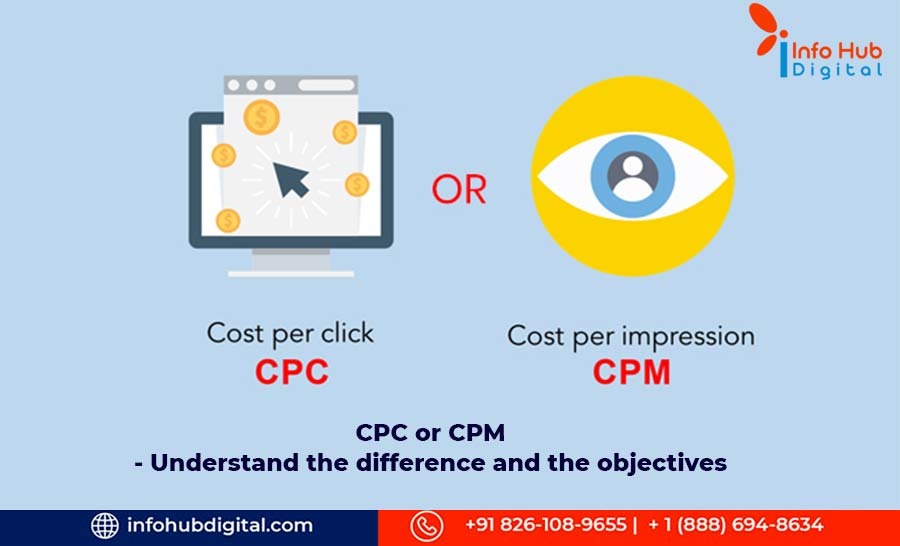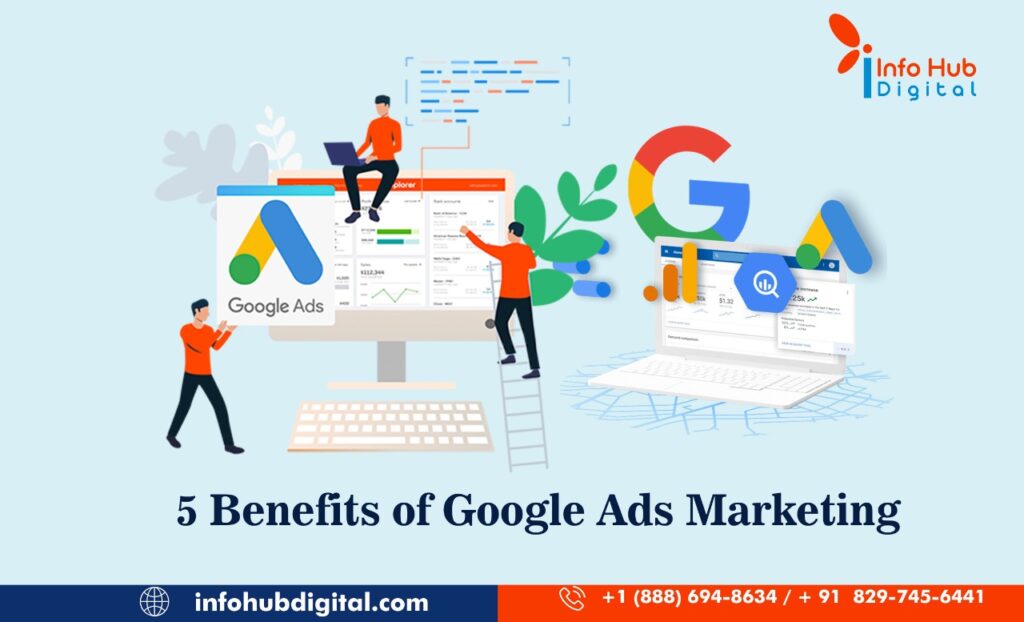Marketers and publishers are often making critical financial decisions in the digitized media-trading market. Numerous factors need to be decided, such as clear objectives and more specifics like selecting the best platform or price structure. We will concentrate on the cost-per-click as well as cost-per-mille models today because it is crucial to pay close attention to every aspect when creating your advertising strategy by best digital marketing agency in USA.
Let’s start by clarifying the terms: CPM and CPC are both types of payments that specify how much you will pay and what you will receive in return. Cost, its calculation, and the kinds of criteria your ad pricing depends on when you promote are the key differences between CPC and CPM.
“Cost per mille” (abbreviated CPM) stands for “cost per mille” and refers to the price per thousand impressions. This effectively indicates that the cost is based on the quantity of supplied impressions. While this is happening, different numbers of clicks can be produced.
The term “cost per click,” or CPC, refers to the amount that the publisher is paid for each click that a user makes. In this approach, advertising that are just viewed by users and not clicked upon are served for free in a pay per click model. Because individual ads can be charged differently based on their effectiveness, this concept is completely different from CPM pricing.
Since you pay for a specific number of clicks when using cost per click while paying for thousands of impressions when using cost per impression, there isn’t any such concept as a CPM CPC conundrum. It also becomes clear that CPM cost is more advantageous if the ad unit is eye-catching and highly clickable because you may produce a lot of clicks for a cheaper rate
Instances where CPM is the best option:
When deciding between CPM and CPC marketing, one should weigh the benefits and drawbacks of each billing model to determine which best fits their needs and objectives. Brand awareness is one of these objectives, and using cost per acquisition in performance campaigns is also a fantastic idea.
Advertisers who wish to increase brand engagement and awareness should consider CPM. Top marketing agencies in USA may guarantee that their ads will receive the impressions they have paid for by adopting this pricing structure. The cost won’t change if there are more clicks, which is fantastic when the main objective is to boost brand presence, particularly if the display advertising are really engaging. Additionally, it can be an excellent choice for marketers that are just beginning to research ways to improve CTR and want to evaluate whether colour, design, or message is most effective for their ads. In addition, CPM offers a fantastic chance to experiment with targeting methods by selecting particular websites and tracking CTR while maintaining a fixed cost for each campaign.
Instances when CPC should be the go-to option:
We should now focus on cost per click and determine the optimum environment for this pricing model in order to properly comprehend the CPM CPC difference. Conversions and retargeting campaigns are two of the best goals for cost-per-click (CPC)-based advertising initiatives. The important thing to remember is that marketers only have to pay when their advertisements are clicked. These can be focused on sales or just website views. You just pay whenever anyone hits on any of your advertisements when you employ CPC bidding. Every time a person views a video, you receive payment. These bidding strategies operate by calculating the cost per click every time people clicks on your advertisement.
Because CPC bidding is tailored for the Search Network, the majority of people use it. When you are aware of the price you are prepared to spend to increase website traffic, it is also the suggested bidding approach used by most of the top digital marketing agencies in the USA.
To sum up, each of the three bidding tactics is distinct and has a unique combination of benefits and drawbacks. These can be utilized to accomplish a variety of campaign goals, such as boosting website traffic, building brand recognition, and boosting retail sales.
Keeping up with the digital marketing vocabulary might seem like a difficult undertaking for both advertisers and publishers trying to launch digital advertising campaigns. However, if a publisher is aware of the various marketing service pricing models, they may select the one that would work best for their ad campaign and use marketing metrics to gain further information such as using Infohub Digital services.







